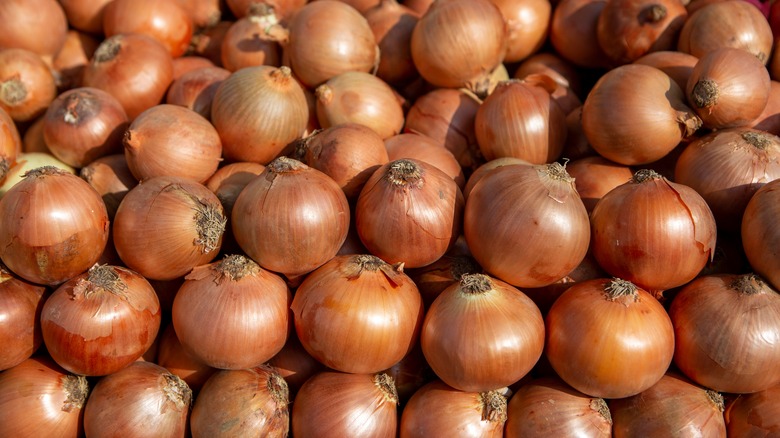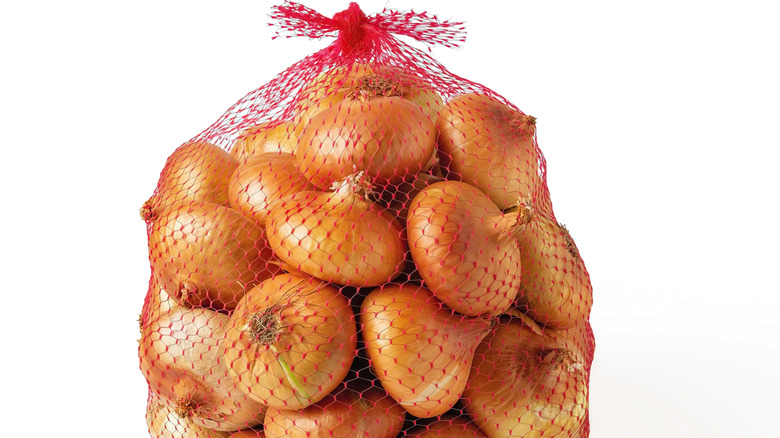How To Tell If Onions Have Gone Bad
Onions, like all produce, are perishable. Meaning, there comes a time when your favorite vegetable — almost certainly one of them, anyway — is no longer in any shape to pickle, sauté, or caramelize, much less garnish a hamburger with. But how can you tell when onions have gone bad?
There are several ways, actually, all of which are commonsensical. Start with a visual inspection, preferably before you choose your onions at the supermarket in the first place. According to Allrecipes, sprouting or mushy spots on an otherwise firm onion are bad signs, as are browning or discoloration ... although these signs alone may not indicate that the onion is spoiled. But avoid these onions at the supermarket. If your onions at home are mushy, discolored, or sprouting, try a sniff test to ensure they're still good. A not pleasantly aromatic vegetable at the best of times, onions that have gone bad have a rotten, decaying smell that is unmistakable. And if you see mold, observes Home Cook Basics, this is a telltale sign that your onions are bad and need to be thrown out.
How to store onions for freshness
According to Bon Appétit, onions last longest when kept in a cool, dry place. Moisture and light are the enemies, as these conditions lead to sprouting and mold. Store your onions in a pantry, cellar, or other cool spot — so long as the temperature is between 45 and 55 degrees Fahrenheit — and they should keep safely for two to three months, reports Allrecipes. Do not keep onions and potatoes next to each other, Consumer Reports notes, as ethylene gasses in onions speed up sprouting in potatoes.
Avoid refrigeration, except for onions that have been peeled, cut, or sliced. These should be stored in a resealable bag or an airtight container, and can safely be refrigerated for up to 10 days, per Healthline. Chopped onions can be frozen — use freezer bags, not ziplock sandwich bags, says The Spruce Eats — and can be stored this way for up to a year.

